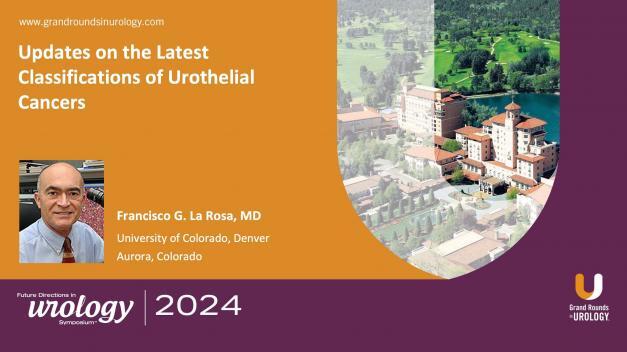Updates on the Latest Classifications of Urothelial Cancers
Francisco G. La Rosa, MD, provides an overview of the historical evolution and recent updates in cancer classification.
In this 11-minute presentation, he highlights the early stages of pathology in the 1800s. Key advancements emerged with the establishment of histopathology in the early 1900s, marking significant strides in cancer characterization.
La Rosa reviews refinements in classifications, such as the 1952 Armed Forces Institute of Pathology system, the WHO’s 1973 classification, the WHO and International Society of Urological Pathology 1998 collaboration, and, finally, the 2022 WHO update. This final update represents a major advancement by incorporating molecular insights and enhancing cancer classifications’ prognostic and therapeutic implications. This edition also discards ambiguous terms like “urothelial dysplasia” and “papillary proliferation of undetermined malignant potential” to reduce diagnostic variability.
Additionally, the updated classification system includes detailed subtypes based on molecular markers, supporting a more nuanced understanding of tumor behavior. The Cancer Genome Atlas is pivotal in this molecular stratification, identifying specific cancer subtypes and associated prognostic markers.
Read More


